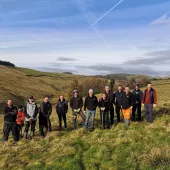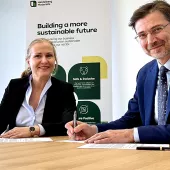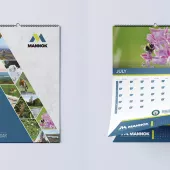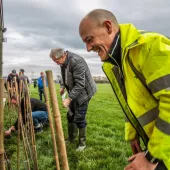RESTORE project gets under way
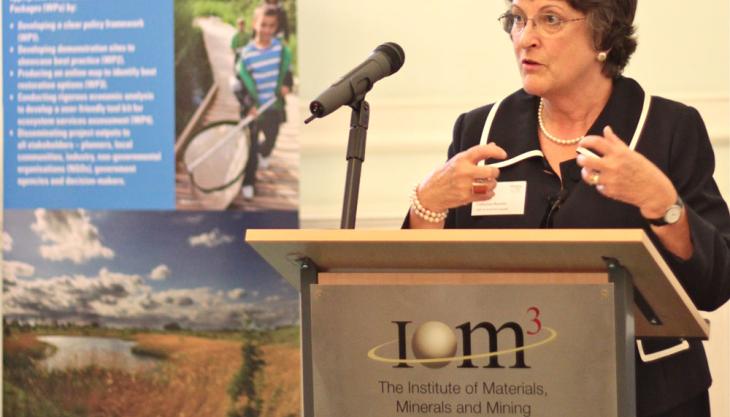
Project launch highlights mineral sites’ huge potential to deliver for 2020 biodiversity targets
THE new RESTORE Project, incorporating partners from the UK, Netherlands, Belgium and Germany, and funded by the European Regional Development Fund through the INTERREG IVB NWE Programme, was officially set on its way at a launch event at the Institute of Materials, Minerals and Mining in London, at the end of September.
Representing the RSPB as lead partner in the project, Sue Armstrong-Brown, head of conservation policy, showcased the project’s ambitions to bring together all sectors from in and around the minerals industry, to capitalize on the vast potential which mineral sites represent for the creation of priority habitat across north-west Europe, as already highlighted through the Nature After Minerals programme in the UK.
Such habitat creation will provide vital homes for all nature in line with the EU’s targets to halt biodiversity decline by 2020, while also helping local communities to reconnect with nature on sites appropriately restored for biodiversity.
Nigel Jackson, chief executive of the Mineral Products Association (MPA) and vice-resident of the European Aggregates Association (UEPG), endorsed such a trans-national vision for wildlife and people on mineral sites, emphasising the mineral industry’s unique position to be able to deliver for nature and restore sites with the needs of biodiversity and local communities firmly in mind.
He highlighted the important contribution that operators are already making towards biodiversity enhancement in the UK, as celebrated at yesterday’s MPA’s Restoration and Biodiversity Awards at the Royal Society in London.
Representatives from industry, planning and the conservation sector also heard from Catherine Bearder (pictured), MEP for south-east England, who gave her full support to the project and acknowledged the role it will play in helping to boost local economies and provide vital services and benefits for local communities through, for example, flood alleviation, green tourism and climate impact mitigation.
She also applauded the project’s model for collaborative partnership working to deliver for biodiversity, in line with EU targets.
The event also sought to provide an overview of the project’s four work package areas – to review and influence minerals planning policy across north-west Europe at a strategic level; share best practice on appropriate biodiversity-led restoration delivery through work at pilot sites and at demonstration events across the partnership region; create an online mapping tool of mineral site potential for biodiversity linkage throughout the focus area; and assess and report on the benefits and services which nature provides through a full ecosystem services analysis of mineral sites restored and managed for biodiversity.
In May this year, a coalition of 25 leading conservation and research organizations reported a 60% decline in UK species in recent decades in the ground-breaking State of Nature Report. The minerals industry in the UK is already playing a key role in helping to reverse such a decline. For instance, 15 of the UK’s hundred pairs of elusive bitterns are to be found on mineral sites which have been restored for nature.
Nature After Minerals (NAM) – the RSPB/Natural England partnership programme – has been working alongside stakeholders in the UK to shine a light on the work being undertaken to enhance biodiversity in and around the minerals industry.
It will continue to play a pivotal role within the RESTORE project, sharing best practice and disseminating advice on innovative ideas and methods being employed, internationally, through a series of demonstration events in the not-too-distant future.
‘Such liaison and collaborative working is necessary as the pressures on the natural world continue to mount. Despite some successes here and there, it needs a helping hand,’ said NAM programme manager Carolyn Jewell.
‘The minerals industry in the UK is working hard to realize its potential to deliver for the natural world and provide vital homes for nature on its sites – whether during the operational phase or post-restoration. But the stakes are high and nature is struggling to keep up in an increasingly developing world.
‘Nature After Minerals is looking forward to working with even more partners further afield, to share instances of great best practice in mineral site restoration, both here in the UK and on the near Continent. The appropriate and sustainable restoration of mineral sites, for biodiversity, can make a real difference to the state of the natural environment.
‘Together, under the RESTORE Project, we can do even more for nature to help combat the worrying declines in species and habitats, while contributing to the economies of local communities in the north-west corner of Europe.’



